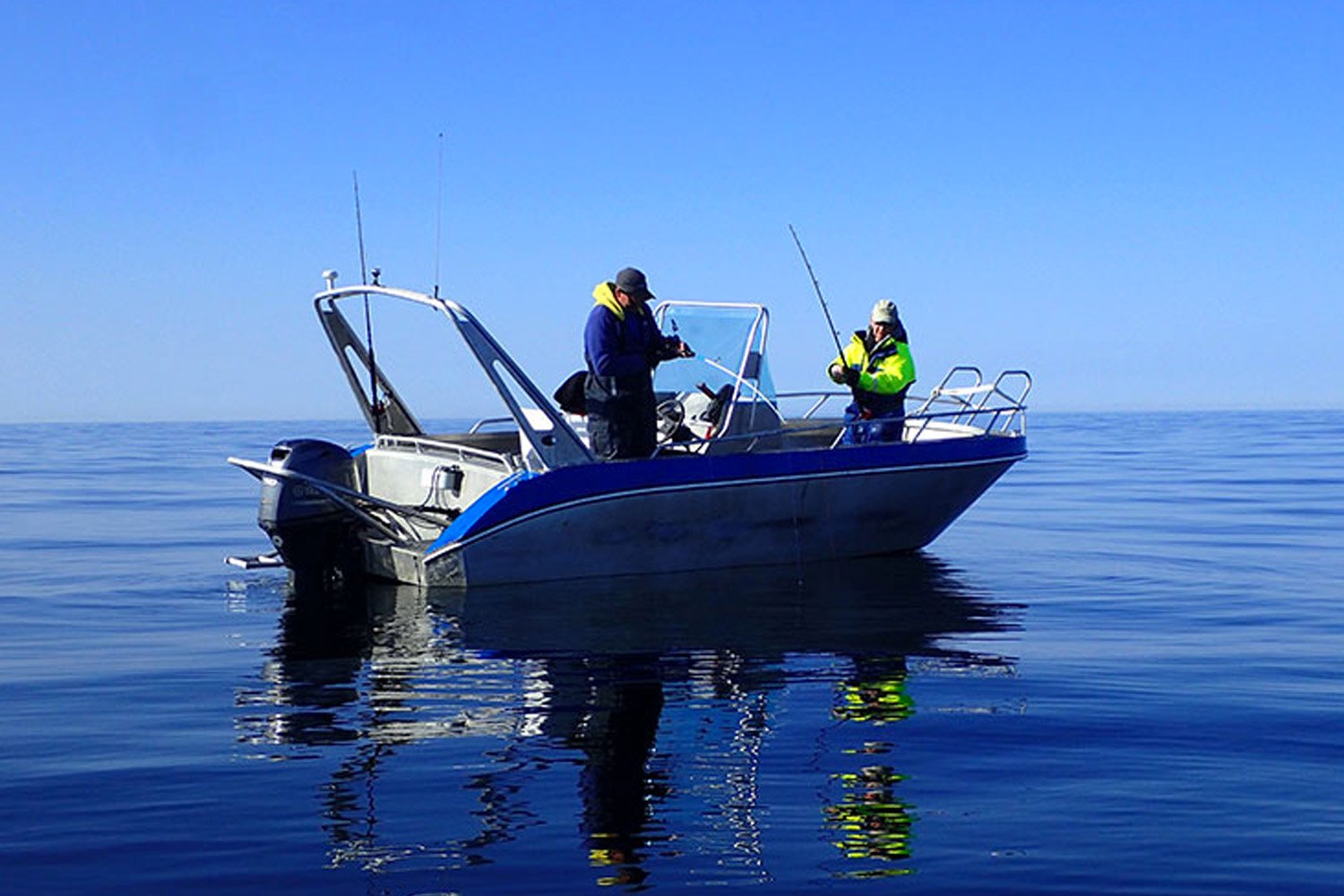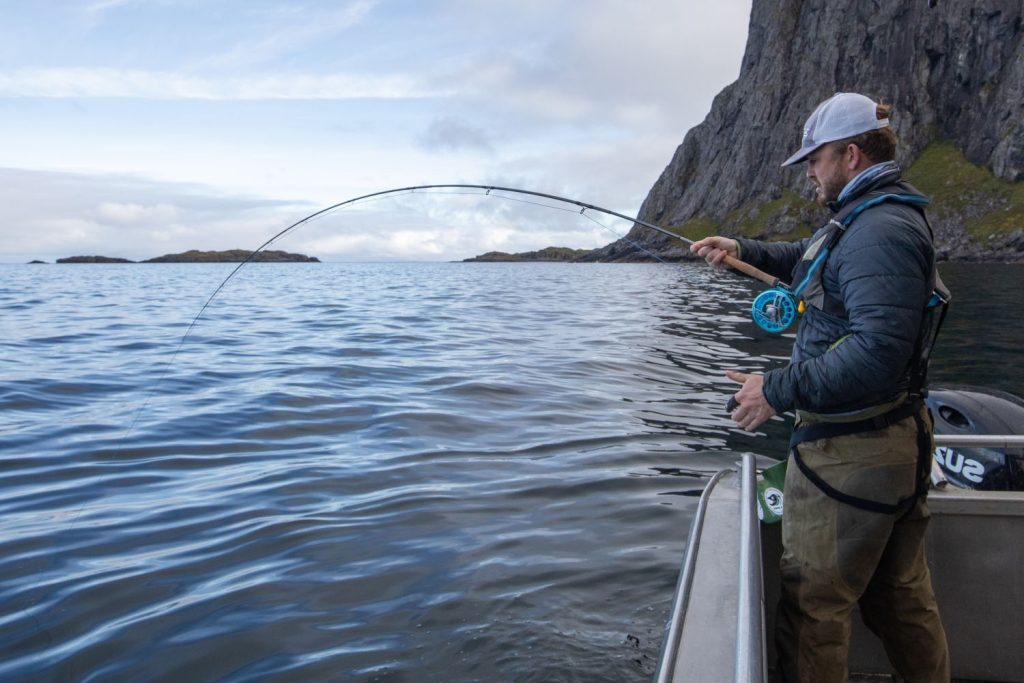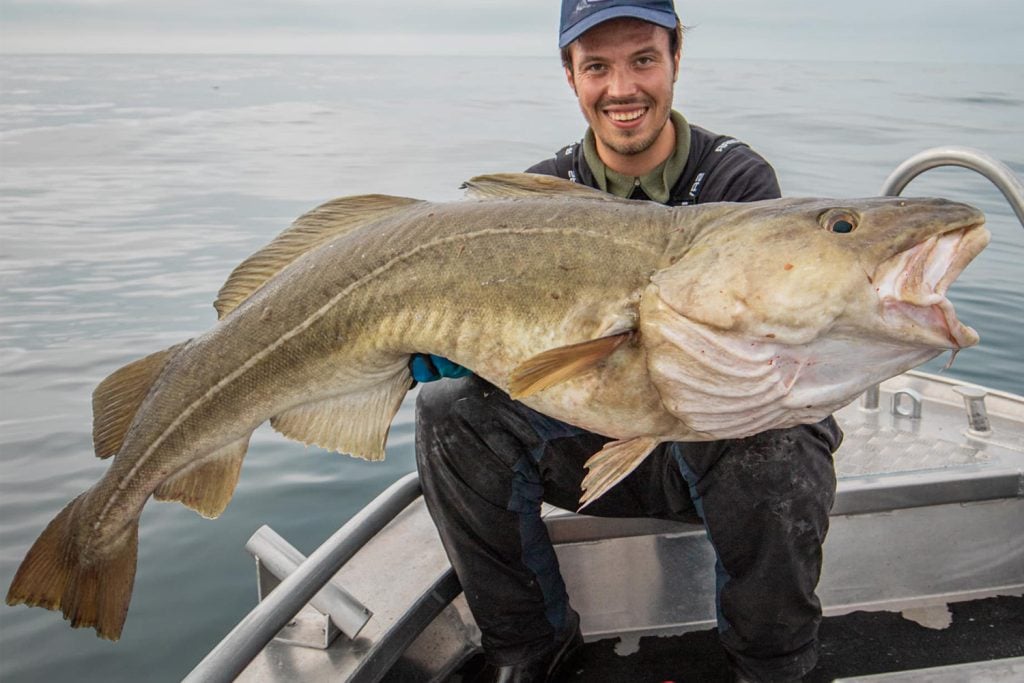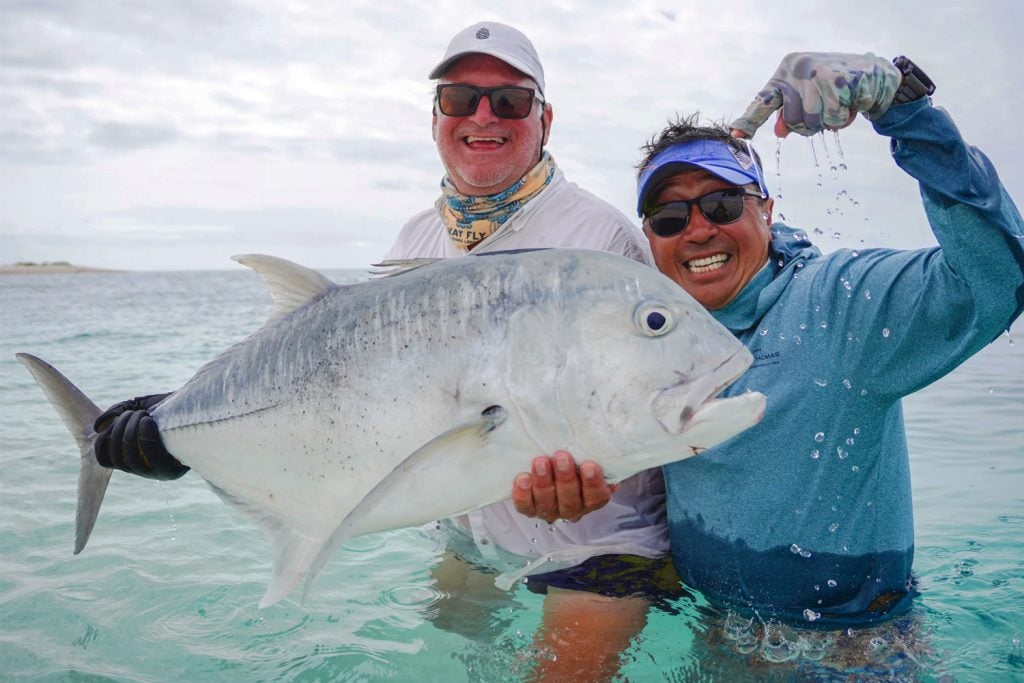Many more people are now practising catch and release when away on their fishing holidays, although it is always lovely to take a fish or 2 for the pot, however, it is also lovely to see them returned to the water. Catch and release fishing is a great way to keep many fish stocks up where they should be. With the Halibut, the huge girls have a reputation for being territorial and will return to the same area year after year.
The Cod is also taking a hammering in population size over recent years, and the real specimen size fish caught are all breeding stock and their chances of survival are lowering. By returning the majority of these fish, you are keeping the possibility of hundreds of thousands more fish being born through spawning. Here we will take you through the methods I would suggest that are the best ways to increase survival rates and ensure that your prize captures can be returned fit and well from the boats to swim again and maybe even be caught at a much larger size in the future.
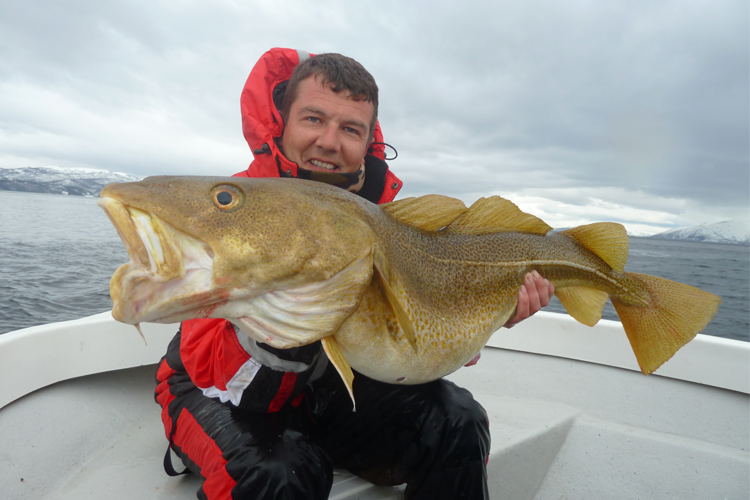

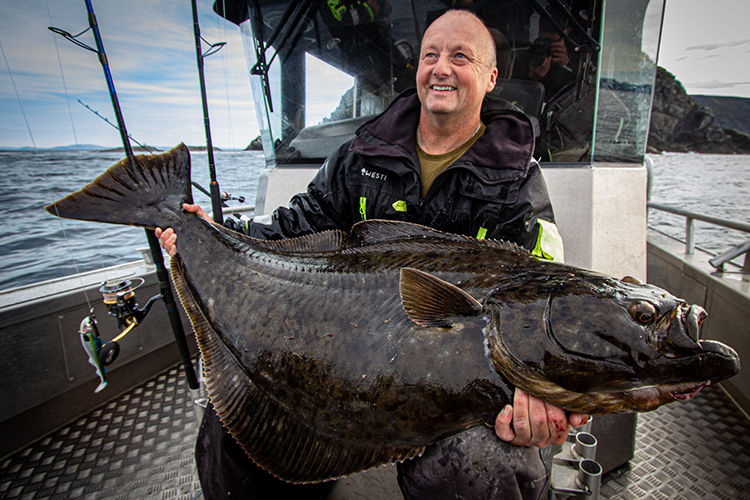

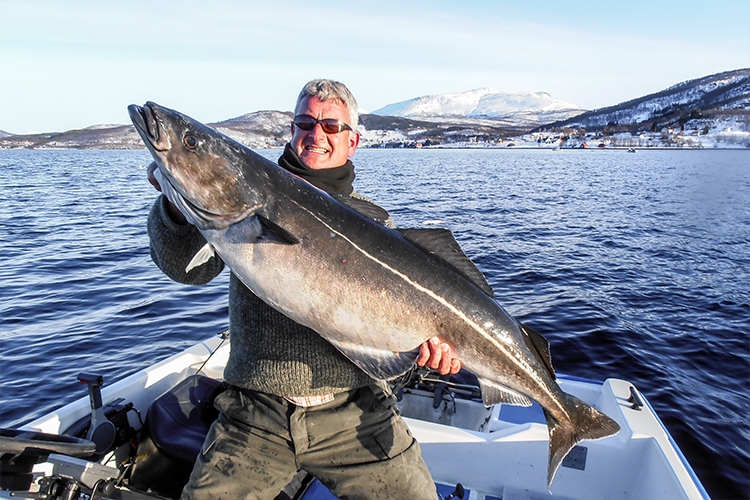

Catch and release fishing – Halibut
Halibut is, of course, one of the travelling anglers favourite fish to catch, these flat musclebound leviathans really give a fight unlike no other, and once you think they are giving up, they will always have that one last drag screaming run left in them to keep you on your toes. Here at Sportquest, we like our customers to return any fish under 80 cm (these are juveniles without much meat on them) and any fish over 140cm (these are the large fish that are not too great to eat), and of course Norwegian law stipulates any fish over 2 metres has to be returned as well.
But how do you ensure one of these stunning specimens heads back to fight again, with the smaller fish it is all about respect and handling as if these fish are unhooked as efficiently as possible, and after a quick photo slid back into the water you will see them disappear with a flick of the tail and return to the depths.
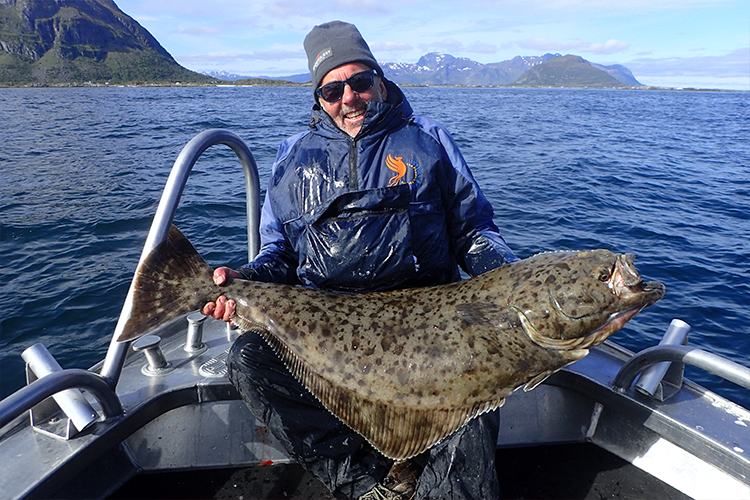

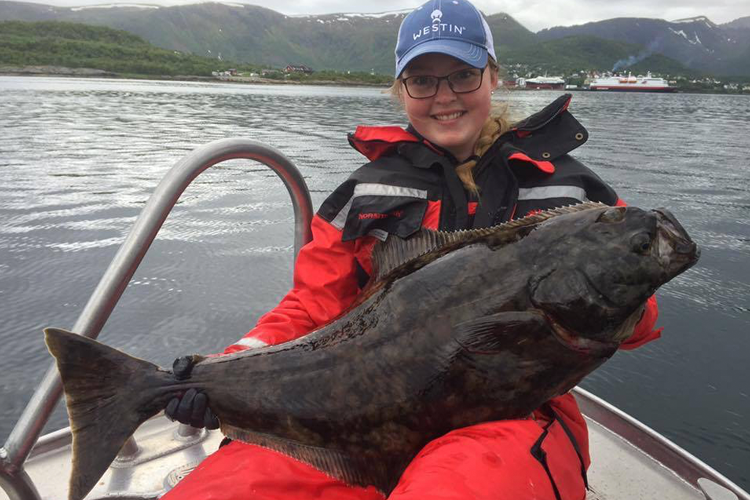

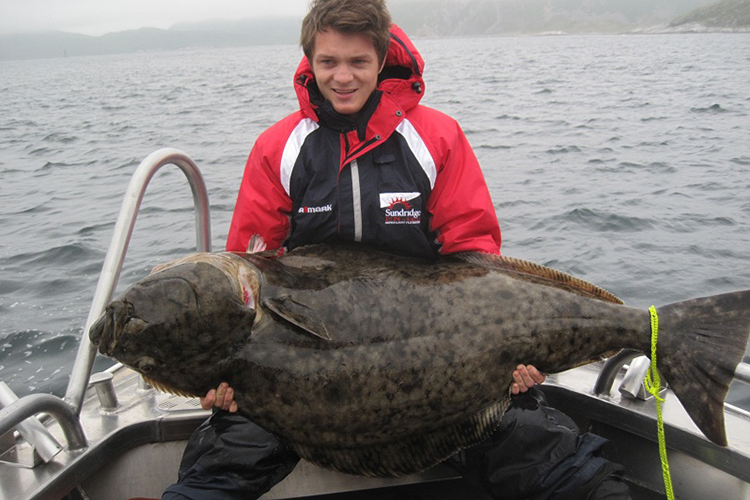

The much larger fish, however, will need a different form of attention to keep them from harm once caught. On nearly all of our boats in Norway, you will find a flying gaff hook with a long piece of rope attached to it. Once your Halibut has come to the side of the boat and appears to be subdued, you must pass the Halibut hook confidently through the bottom jaw of this fish and in one movement pull it through the other side until the long rope secures the fish through the bottom jaw. The fish will inevitably start thrashing so hold on tight as this will soon subdue the fish, then with your second tail rope, pass one end of the rope through the loop on the other end forming a slip loop and then place over the wrist of the tail of the Halibut and give it a good pull. You will then have the Halibut secured by both the head and tail end where you can then tie the top off to the boat and take your measurements and your trophy shots. Please bear in mind that you must make sure you always keep the Halibuts mouth in the water.
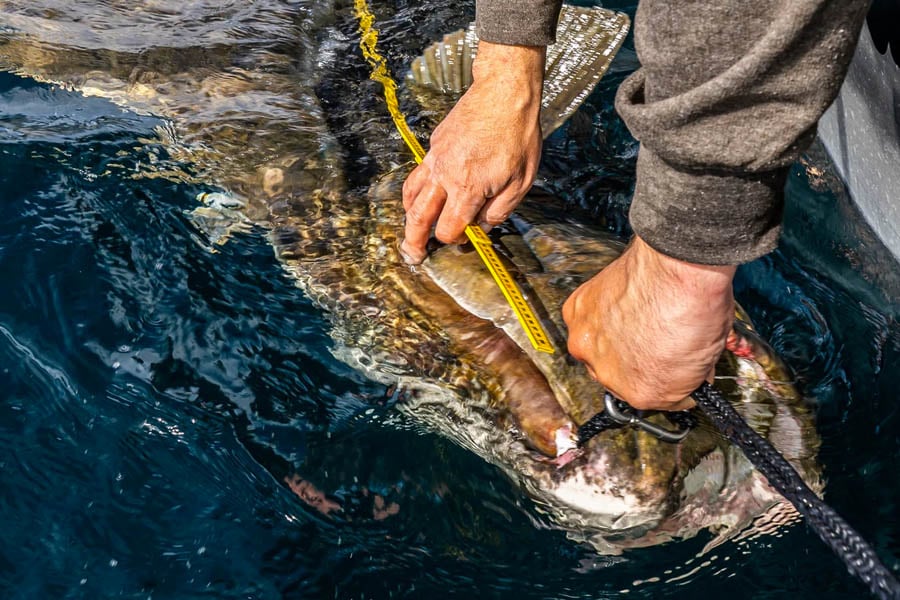

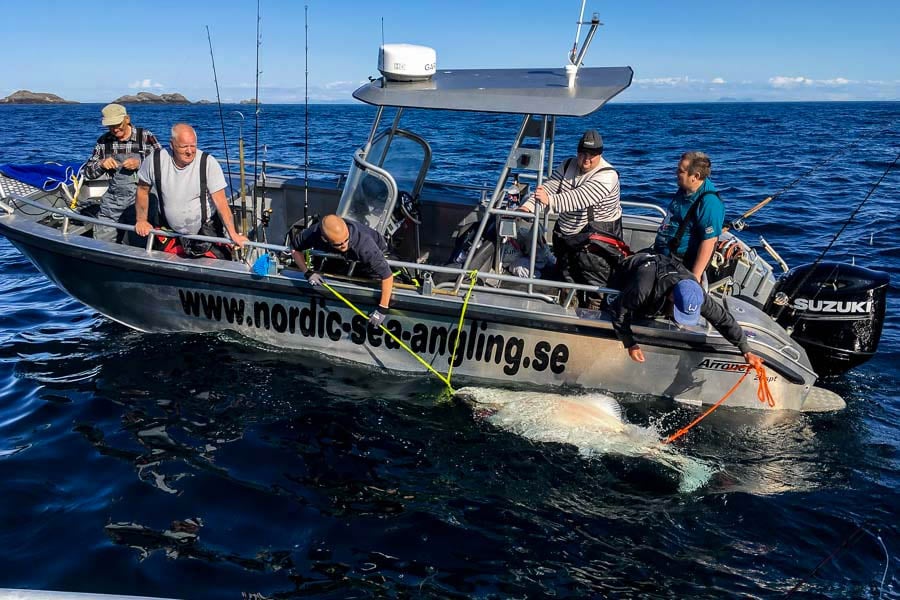

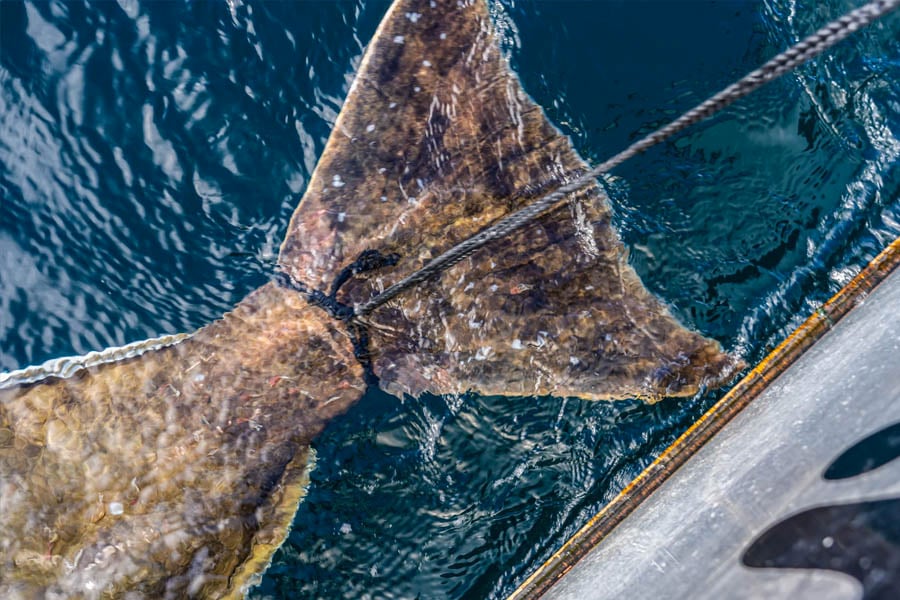

You can now take photographs knowing your fish is safe and secure and has not had to be lifted out of the water at all. Once you are ready to release the fish ensure the rope is pulled through the jaw just leaving the tail loop attached, the fish should now be fully revived and fit after resting in the water beside the boat as it drifts. When you are ready, remove the tail rope and watch your prize capture disappear in a splash of water as she kicks her tail and heads straight back down to the bottom ready for the next angler to enjoy the thrill of such a beautiful fish.
If you’re looking for some footage which shows off this rope method then take a look at the video below.
Catch and release fishing – Cod
Hundreds, if not thousands of anglers head to Norway each year to do battle with the fantastic Cod that live around these shores. Of course, Cod and chips will always be on the menu at some point during the week, but with more and more anglers practising catch and release fishing now, there are specific ways to ensure you are not blowing up the swim bladder of every fish you are catching.
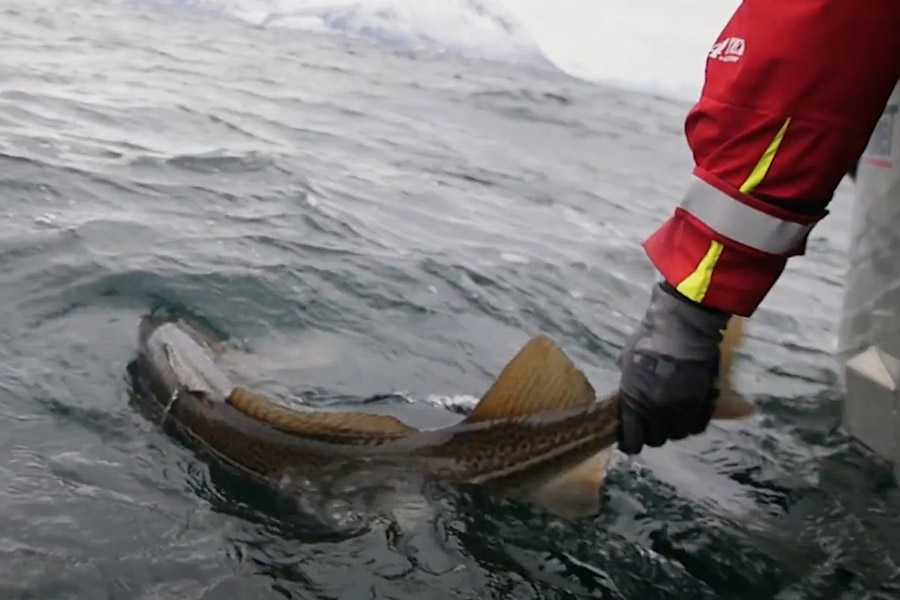

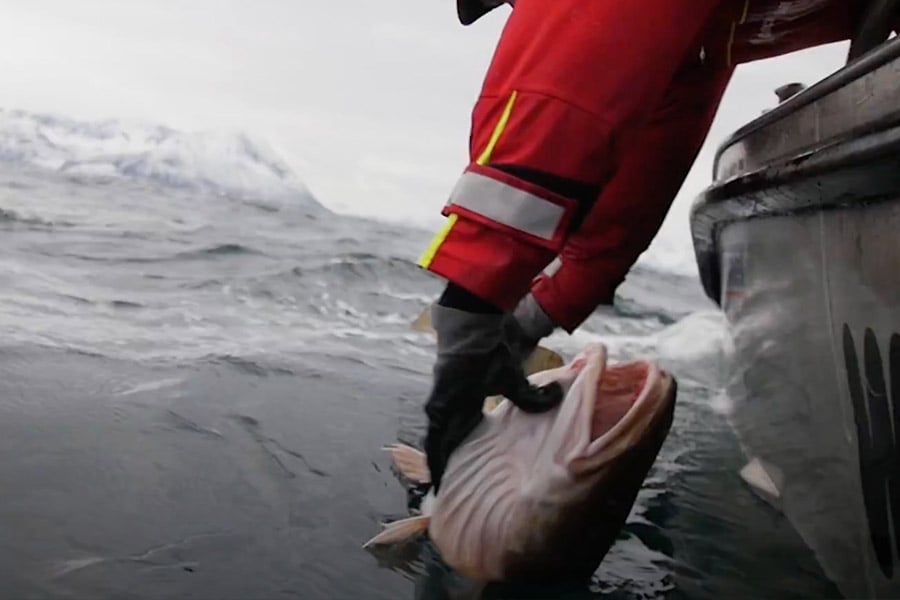

Sometimes the fishing can be frantic and reeling these fish up at speed from the depths can and will mean that they blow their swim bladders. This can be disastrous as the fish will then just be left floating around on the surface, slowly dying as they cannot make their way back down, which is never a pleasant sight for any angler after catching a fish.
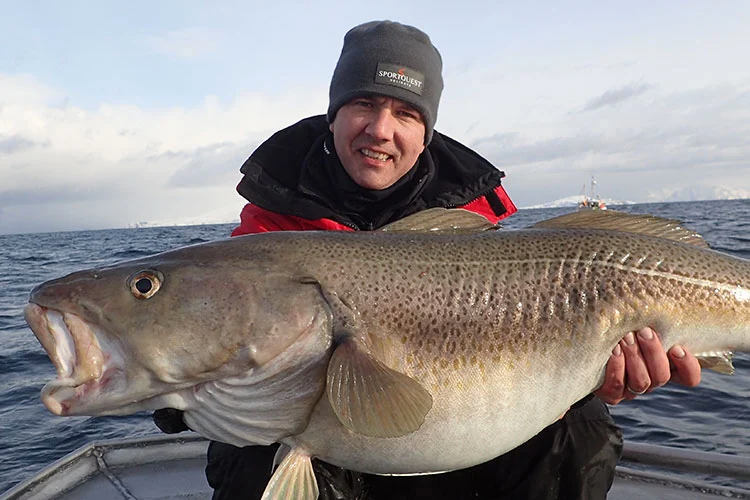

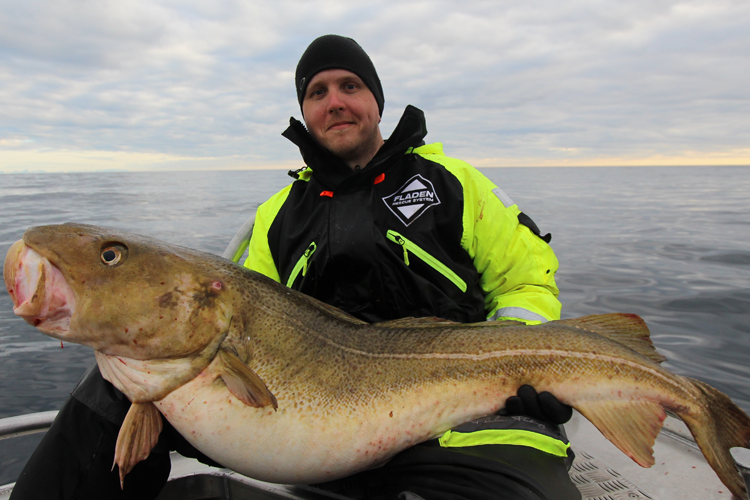

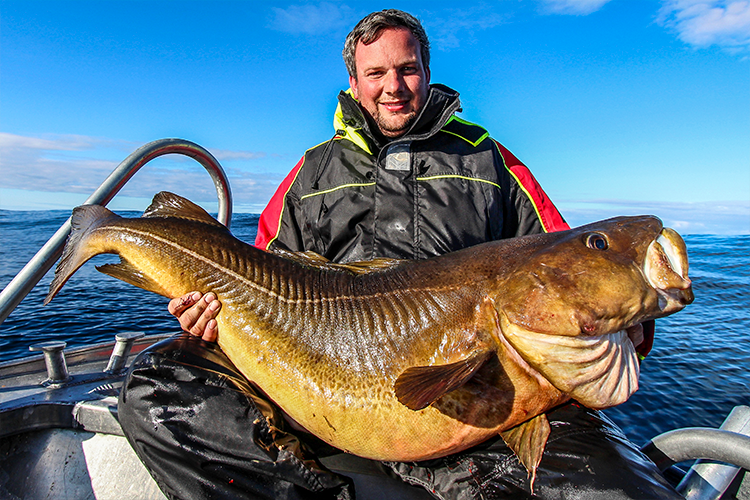

The trick here when it comes to catch and release fishing is that every fish you catch, on the retrieve, should be stopped once you see colour in the water, This usually is around 6 metres down. When you stop winding at this depth, the fish will equalize itself by releasing a vast amount of bubbles which you will see rising and fizzing on the surface of the water. Once these bubbles stop, the fish will start to kick and fight again, and it is at this point that you can finally bring the fish to the boat without any harm coming to the fish. Once you have taken your photographs, slide the fish back into the water, and you should see your Cod swim straight back down to the bottom.
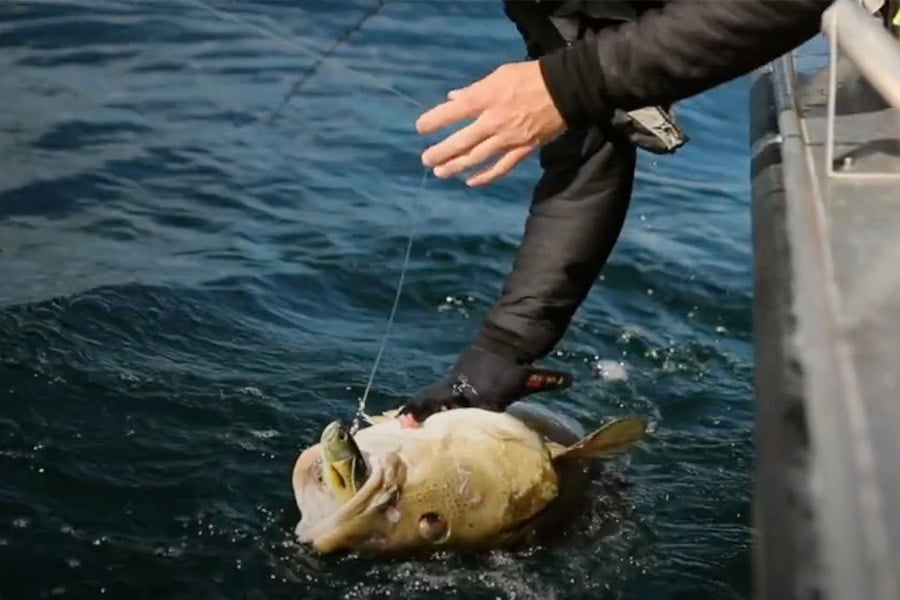

If your fish still floats, however, then you will need to get it back on the boat as soon as you can as leaving a fish flapping about on the surface is a big no-no in Norway and is hugely frowned upon by local anglers. When you get this fish back on the boat the only way to get this fish down again is by launching the fish headfirst into the water with force, the sudden pressure change will force the bubbles out, and your fish will swim back down to the depths.
Catch and release fishing – Coalfish
I have fished for Coalfish for many years now, and it’s a fact that the big ones are hard to release, however, I got informed of something a few years ago from an excellent friend who guides for a living in regards to practising catch and release fishing. The best way to release big Coalies starts before you’ve even landed the fish, you want to start by cranking up your clutch so they can not take any line. Always try to use either a single hook or just 1 treble, but preferably single barbed or barbless hooks work fine and that way you will not cause too much damage to the fish, reduce the risk of deep hooking your fish which causes the fish to feel pain and possibly run into health issues down the line in their life.
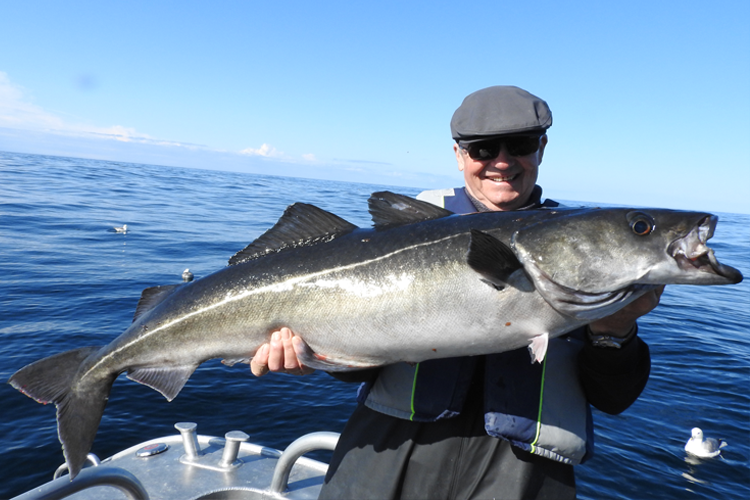

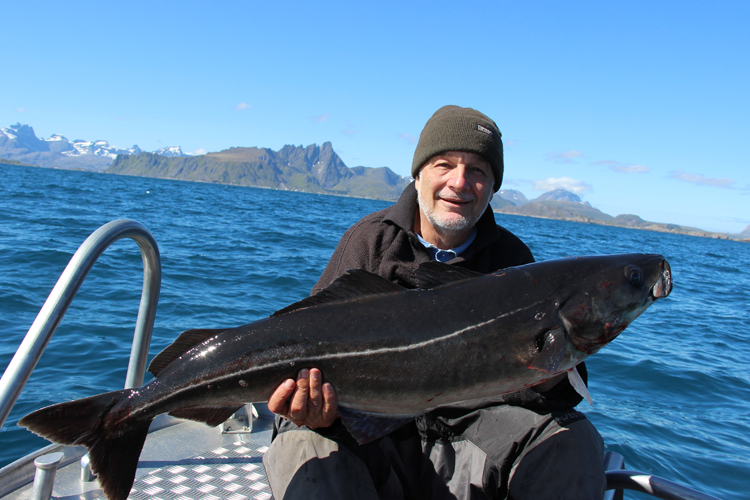

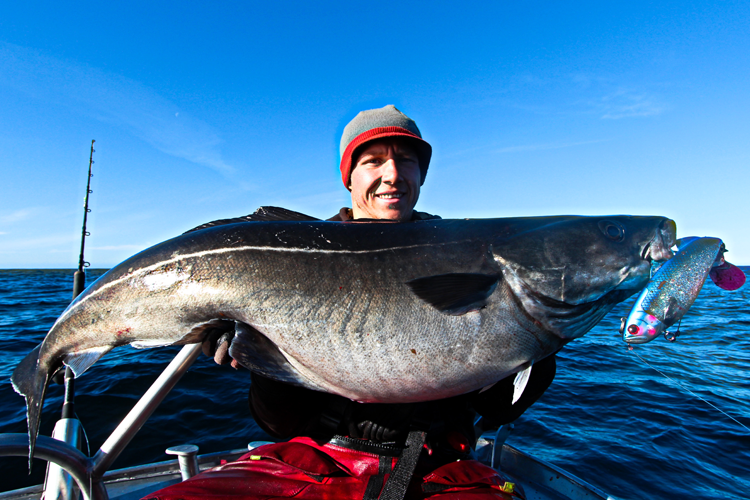

Once the fish is hooked and you have won the battle and want that trophy shot, remove the hook and move the hook and line out of the way before carefully cradling the fish out of the water by its head and tail lift it quickly for a picture and then throw headfirst back into the water. Please make sure you have the camera and scales ready first before bringing the fish onboard and be as quick as possible as these fish fight their hearts out.
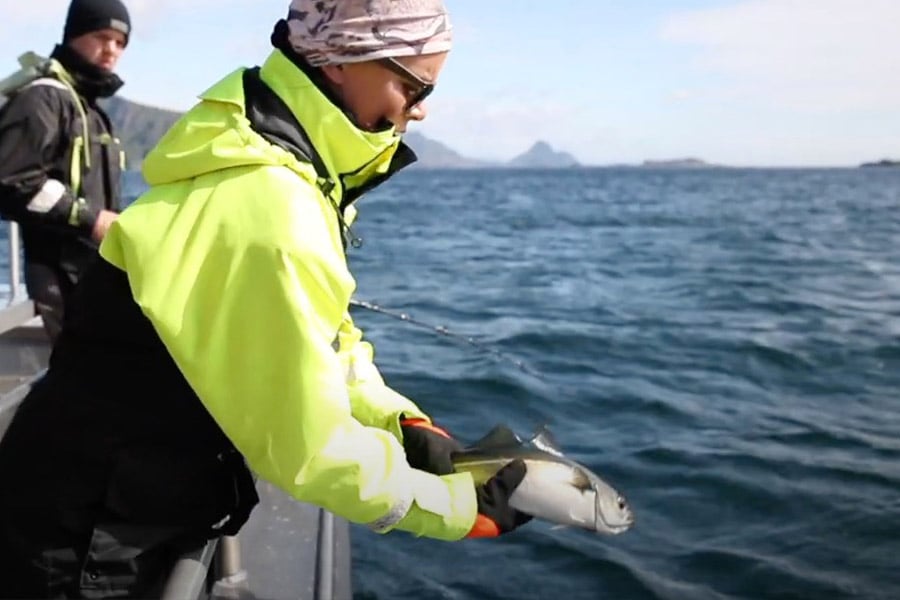

Of course, you will sometimes, not be able to do anything to save the fish and you mustn’t leave dead fish floating on the water, and you should take any dead fish back to the harbour. Speak to the onsite guides who will advise you what to do with the fish. You can, of course, chose to eat it yourself or the guides will recommend what to do with it. No fish will go to waste, but with care and attention, your Coalfish should go back every time.
Tight lines,
Paul Stevens
Contact us
Hopefully, this will help you with practising catch and release fishing when out in Norway and helps to ensure that any fish you do not want to take for the table manages to swim back down to the depths, ensuring that no unnecessary amounts of fish are being killed.
This is imperative to keep the Norwegian fish stocks as large as they have been in recent years, you may think that it does not matter as the stocks are fairly large but it really is down to us, the anglers, to ensure the fishing in Norway stays as fantastic as we all want it to be for years to come.
If you have any questions regarding our Norway sea fishing holidays, please feel free to contact us on 01603 407596 and our experienced team will be happy to help. Are you looking to explore some Cod, Halibut or Coalfish destinations? You can get a great look at our tours on our dedicated Sea Fishing Youtube Playlist.
